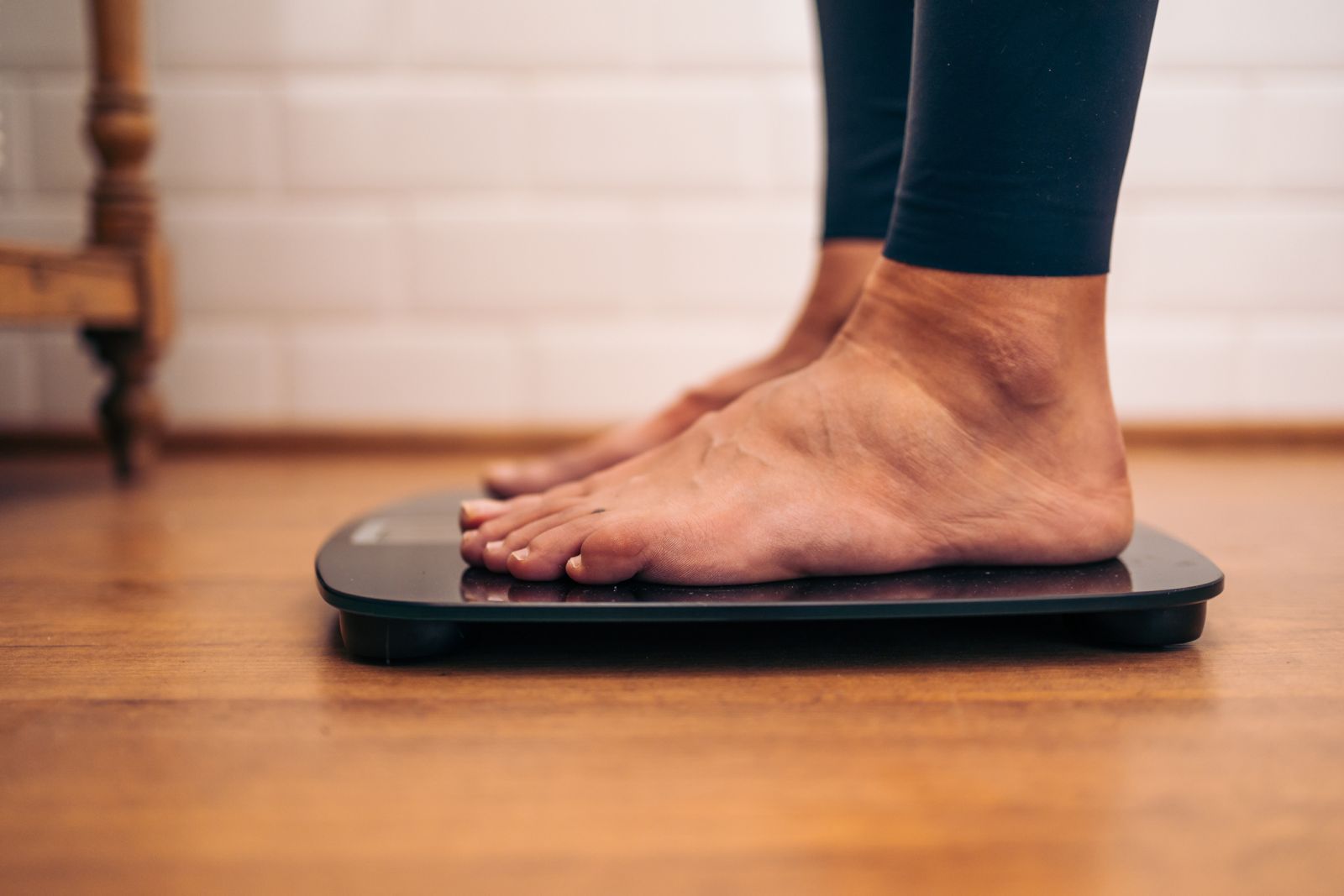Tirzepatide Dramatically Lowers Weight and A1C
By April HopcroftEliza SkolerRhea Teng
 Full results from the SURPASS trials investigating the dual agonist tirzepatide show that the new medication dramatically lowers A1C and weight in people with type 2 diabetes. Read the latest from all of the clinical trials to date.
Full results from the SURPASS trials investigating the dual agonist tirzepatide show that the new medication dramatically lowers A1C and weight in people with type 2 diabetes. Read the latest from all of the clinical trials to date.
Following Mounjaro’s FDA approval in 2022 for type 2 diabetes, more data is emerging that further demonstrates the remarkable A1C and weight-lowering benefits of this new diabetes drug.
Tirzepatide is a once-weekly injectable medication that is approved for type 2 diabetes as Mounjaro and for chronic weight management as Zepbound. This glucose-lowering therapy is called a dual agonist or a dual GIP and GLP-1 receptor agonist because it targets two different hormone receptors.
Several clinical trials have investigated varying doses of tirzepatide (5 mg, 10 mg, and 15) in adults with type 2 diabetes. Some trials studied the use of tirzepatide in combination with other treatments, while others compared tirzepatide to different diabetes drugs.
Here are the results from each clinical trial.
SURPASS-1: Tirzepatide shows powerful glucose and weight loss benefits for type 2 diabetes
SURPASS-1 investigated tirzepatide in 478 adults with type 2 diabetes who needed treatment beyond diet and exercise to manage their blood sugar levels. Participants were randomly assigned to tirzepatide or a placebo.
At the start of the study, participants had lived with diabetes for less than five years with an average A1C of 7.9% and a body mass index (BMI) of 32. Half the participants had not used a diabetes medication before.
After 40 weeks, all doses of tirzepatide lowered A1C, fasting glucose levels, and body weight. Here are the key findings:
-
Tirzepatide led to A1C reductions of 1.9 percentage points (with the 5 mg dose) to 2.1 percentage points (with the 15 mg dose), compared to no change in the placebo group.
-
Almost 90% of participants taking tirzepatide achieved an A1C below 7%.
-
Participants lost an average of 15-21 pounds on the 5 mg and 15 mg tirzepatide doses, respectively. In the placebo group, participants lost an average of 1.5 pounds.
SURPASS-2: Tirzepatide outperforms semaglutide 1 mg for reducing body weight and lowering glucose
SURPASS-2 compared tirzepatide (5 mg, 10 mg, and 15 mg) to 1 mg of the GLP-1 receptor agonist semaglutide (approved as Ozempic for diabetes) in 1,879 participants with type 2 diabetes. Note that semaglutide 1 mg is a sub-clinical dose; the full clinical dose of Ozempic is semaglutide 2 mg.
Starting the study, participants had diabetes for an average of nine years, had an A1C of 8.3%, and weighed roughly 207 pounds. Here are the key findings:
-
Tirzepatide reduced A1C by 2.1 percentage points (on the 5 mg dose) and 2.5 percentage points (on the 15 mg dose) compared to a 1.9 percentage point decrease with semaglutide 1 mg.
-
Tirzepatide helped more people achieve an A1C below 7%. More than 85% of participants taking either dose of tirzepatide reached this threshold, compared to 81% of those taking semaglutide 1 mg.
-
Tirzepatide showed body weight reductions of 17-27 pounds on the 5 mg and 15 mg doses, respectively. People taking semaglutide 1 mg lost an average of 13.6 pounds.
A recent meta-analysis comprising nearly 18,500 people with type 2 diabetes concluded that Mounjaro (tirzepatide) is more effective than Ozempic for both blood glucose control and weight reduction.
SURPASS-3: Tirzepatide superior to basal insulin for blood sugar and weight management
 SURPASS-3 compared tirzepatide to insulin degludec in 1,437 participants who were randomly assigned either treatment for one year.
SURPASS-3 compared tirzepatide to insulin degludec in 1,437 participants who were randomly assigned either treatment for one year.
At baseline, participants had lived with diabetes for around eight years with an A1C of 8.2% and a body weight of 207 pounds. Here are the key findings:
-
A1C decreased by 1.9 percentage points on 5 mg and 2.4 percentage points on 15 mg of tirzepatide compared to a 1.3% decrease taking insulin degludec.
-
More than 85% of those using tirzepatide achieved an A1C below 7%, compared to 61% of those in the insulin group.
-
People taking tirzepatide lost 17-29 pounds (on the 5 mg and 15 mg doses, respectively), while those on insulin degludec gained 5 pounds on average.
-
Individuals on tirzepatide experienced fewer instances of hypoglycemia (glucose levels below 70 mg/dL) than people taking insulin degludec.
SURPASS-4: Tirzepatide shows potential benefits to the heart and kidneys
In this trial of nearly 2,000 participants, researchers compared the effects of tirzepatide vs. insulin glargine (under the brand names Lantus, Basaglar, and Toujeo) on A1C.
At the start of the study, participants had type 2 diabetes with an increased risk for heart disease, with an A1C of 8.5% and a body weight of 199 pounds. Here are the key findings:
-
A1C decreased by 2.2 percentage points on the 5 mg dose and 2.6 percentage points on the 15 mg tirzepatide dose, compared to a 1.4 drop in percentage points in those taking insulin glargine.
-
More than 80% of people taking tirzepatide achieved an A1C below 7%, compared to 51% of those in the insulin group.
-
People taking tirzepatide lost 16-26 pounds (on the 5 mg and 15 mg dose, respectively), while those using insulin glargine gained 4 pounds on average.
Additionally, an analysis of SURPASS-4 suggested that tirzepatide may also slow the progression of chronic kidney disease in people with type 2 diabetes.
SURPASS-5: Tirzepatide improves A1C and body weight among people with type 2 diabetes who use insulin
SURPASS-5 investigated the safety and efficacy of tirzepatide compared to placebo in 475 people with type 2 diabetes who were treated with insulin glargine. Participants were randomly assigned tirzepatide or a placebo, in addition to their usual dose of insulin glargine for 40 weeks.
At baseline, participants had an average duration of diabetes of 13 years, an A1C of 8.3%, weighed 209 lbs, and took 38 daily units of insulin. Here are the key findings:
-
A1C decreased by 2.1 percentage points on the 5 mg dose and 2.4 percentage points on the 10 mg tirzepatide dose compared to a 0.9 percentage point decrease in the placebo group.
-
Over 85% of participants in the tirzepatide groups achieved an A1C level below 7%, compared to 34% of people in the placebo group.
-
Participants lost an average of 12-19 pounds (on the 5 mg and 15 mg doses of tirzepatide, respectively). In the placebo group, participants lost 3.5 pounds.
SURPASS-6: Tirzepatide plus basal insulin is superior to basal-bolus insulin for glucose and weight management
 This trial sought to answer the question: for people with type 2 diabetes who are on basal insulin, how does adding tirzepatide compare to adding rapid-acting insulin?
This trial sought to answer the question: for people with type 2 diabetes who are on basal insulin, how does adding tirzepatide compare to adding rapid-acting insulin?
Specifically, SURPASS-6 compared adding tirzepatide vs. adding thrice-daily insulin lispro in approximately 1,400 participants with type 2 diabetes already taking insulin glargine.
At the start of the study, people had diabetes for nearly 14 years with an average A1C of 8.8% a a body weight of about 199 pounds. Here are the key findings:
-
Tirzepatide led to a significantly greater reduction in A1C (2.1 percentage points), compared to a 1.1 percentage point reduction with insulin lispro.
-
Whereas tirzepatide led to an average weight loss of 20 pounds, insulin lispro led to an average weight gain of nearly 7 pounds.
-
More than twice as many participants on tirzepatide achieved an A1C of less than 7% compared to those on insulin lispro.
What do the SURPASS results mean for people with type 2 diabetes?
Together, these remarkable results are what led to tirzepatide’s approval as a treatment for blood glucose management in people with type 2 diabetes. Each trial yielded strong evidence for how tirzepatide lowers weight and A1C.
In people with obesity without type 2 diabetes, tirzepatide also led to significant weight loss, as demonstrated in the SURMOUNT clinical trials. Furthermore, some smaller analyses have pointed to potential heart and kidney benefits of tirzepatide, though these remain to be confirmed in ongoing large-scale trials.
Additional studies are investigating how tirzepatide performs in children and adolescents and in Chinese populations, as Asian people may have lower BMI cutoffs for obesity.
Tirzepatide, which was developed by Eli Lilly and Company, is also being studied for complications related to type 2 diabetes and obesity, such as chronic kidney disease, obstructive sleep apnea, and long-term cardiovascular health.
Learn more about new therapies for type 2 diabetes and weight management here:








